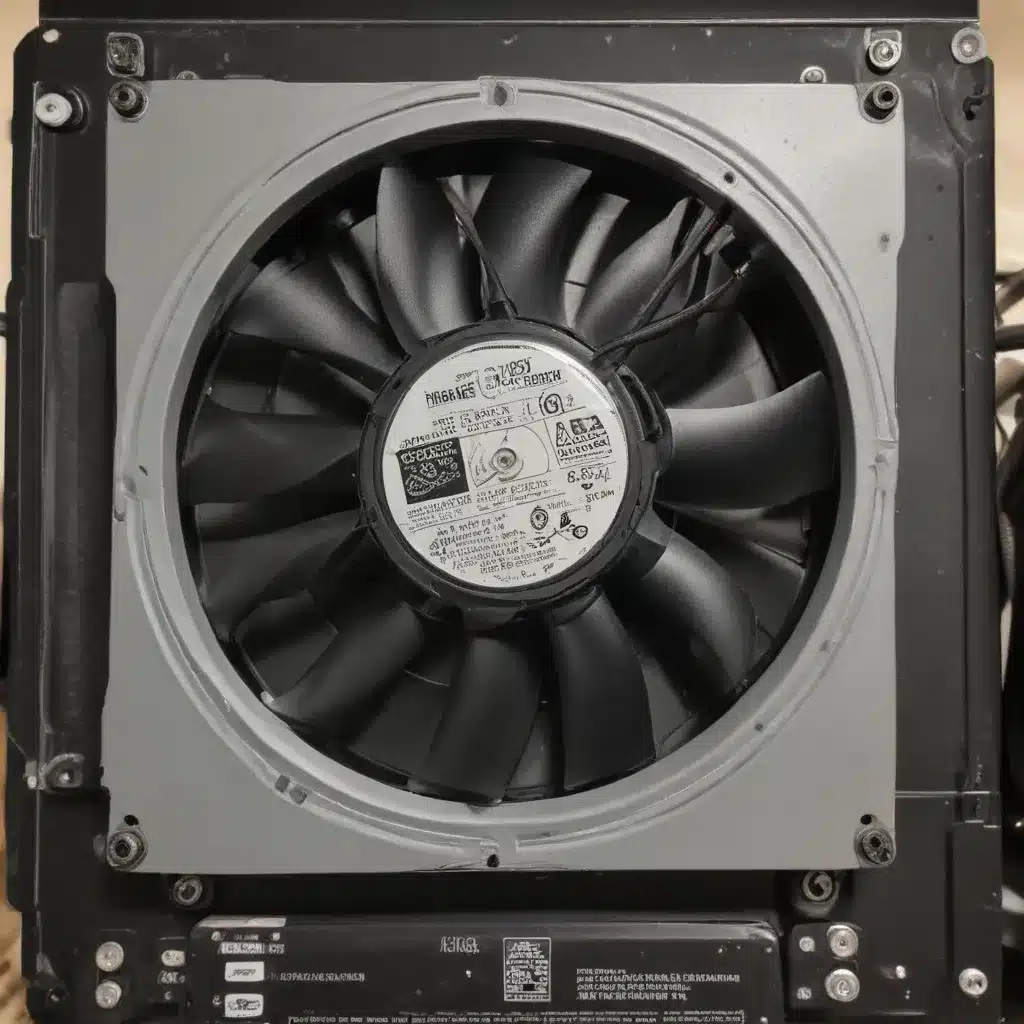
As a seasoned IT professional, I’ve encountered countless cases of laptop owners grappling with unwanted noise from their devices. Whether it’s the persistent whir of the cooling fan or the high-pitched whine of coil vibrations, these sounds can be a real nuisance, disrupting productivity and causing frustration. In this comprehensive article, we’ll dive deep into the causes of these noises and explore practical solutions to help you restore the tranquility to your laptop experience.
Understanding Laptop Noise: Fans and Coil Whine
The primary culprits behind laptop noise are the cooling fan and the various electronic components, particularly the coils found in power supplies and other circuitry. Let’s explore these two main sources of noise in more detail:
Cooling Fan Noise
Laptop cooling fans are essential for maintaining optimal temperatures, especially during intense workloads or gaming sessions. However, these fans can become a source of annoyance when they operate at high speeds or when they start to wear down over time. The noise they generate can range from a low hum to a high-pitched whine, depending on the fan’s RPM and the overall design of the laptop’s cooling system.
Coil Whine
Coil whine, on the other hand, is a high-pitched, electronic-sounding noise that often originates from the power supply or other electromagnetic components within the laptop. This phenomenon is caused by the vibration of the coils, which can occur due to the rapid changes in electrical current flowing through them. Coil whine is particularly common in laptops with powerful graphics cards or other high-performance components that require a lot of power.
Minimizing Fan Noise
Reducing fan noise can be achieved through a combination of software-based and hardware-based solutions. Let’s explore some effective strategies:
Adjust Fan Settings
Many laptops come with built-in power management or cooling software that allows you to adjust the fan speed and behavior. Explore these settings and try to find the optimal balance between cooling performance and noise reduction. Some laptops even offer a “silent” or “quiet” mode that prioritizes noise reduction over maximum cooling.
Optimize Airflow and Cooling
Ensuring proper airflow and cooling within your laptop can help reduce the strain on the cooling fan, leading to lower noise levels. Make sure the laptop’s vents are unobstructed, and consider using a laptop cooling pad or stand to improve air circulation.
Clean and Maintain the Cooling System
Over time, dust and debris can accumulate in the laptop’s cooling system, reducing its efficiency and causing the fan to work harder. Regularly clean the laptop’s interior, including the fan and heatsink, to maintain optimal cooling performance and minimize noise.
Consider Laptop Replacement
If the fan noise persists despite your efforts, it may be an indication of a more serious underlying issue, such as a faulty fan or a problem with the laptop’s cooling system. In such cases, it may be worth considering a laptop replacement, especially if the device is nearing the end of its lifespan.
Tackling Coil Whine
Addressing coil whine can be a bit more challenging, but there are still several strategies you can try:
Undervolt and Optimize Power Settings
Coil whine is often exacerbated by excessive power draw, especially in high-performance components like the graphics card. Undervolting the affected components can help reduce the electrical current flowing through the coils, leading to a reduction in coil whine.
Adjust Frequency and Duty Cycle
The switching frequency and duty cycle of the power supply can also contribute to coil whine. Some users have reported success in reducing the noise by adjusting these settings, either through software or by modifying the power supply itself (a task best left to experienced technicians).
Use Sound Dampening Accessories
Applying sound dampening materials, such as vibration-absorbing pads or cases with acoustic insulation, can help mitigate the transmission of coil whine. While this approach may not eliminate the noise entirely, it can significantly reduce its audibility.
Consider a Replacement or Repair
In some cases, the coil whine may be a result of a manufacturing defect or a design flaw. If the issue persists despite your efforts, you may need to explore the possibility of a warranty replacement or repair with the laptop manufacturer.
Preventive Measures and Maintenance
To maintain a quiet and comfortable laptop experience, it’s essential to incorporate preventive measures and regular maintenance into your routine. Here are a few tips:
- Regularly clean the laptop’s interior to prevent dust buildup, which can impair cooling efficiency and contribute to fan noise.
- Ensure the laptop is placed on a stable, well-ventilated surface to promote optimal airflow.
- Monitor the laptop’s temperatures and fan behavior, and be proactive in addressing any abnormalities.
- Consider upgrading to a newer, more energy-efficient laptop model if your current device is prone to excessive noise and heat issues.
By following these strategies and staying vigilant about your laptop’s performance, you can significantly reduce the impact of fan and coil whine, allowing you to enjoy a quieter, more productive computing experience.
Conclusion
Laptop noise can be a frustrating issue, but with the right knowledge and troubleshooting techniques, you can effectively minimize the impact of fan and coil whine. By understanding the underlying causes, implementing software-based and hardware-based solutions, and maintaining your laptop’s cooling system, you can reclaim the peace and quiet you deserve. Remember, a well-maintained and optimized laptop can deliver not only superior performance but also a more enjoyable and distraction-free work environment.
For more comprehensive IT solutions and computer repair advice, be sure to visit IT Fix, where our team of seasoned professionals is dedicated to providing practical guidance and in-depth insights to help you get the most out of your technology.












